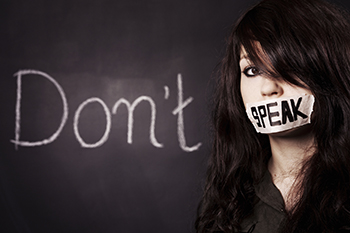 At the beginning of the school year, Chicago University students received a peculiar welcome letter from the dean of students. As noted in The New York Times, instead of being solely an introductory letter, it addressed the issue of trigger warnings, and informed students that the University of Chicago would neither encourage nor tolerate educational conditions, including demands for safe spaces, that some claim are producing “coddled” students at US colleges and universities, and seriously undermining academic inquiry and growth.
At the beginning of the school year, Chicago University students received a peculiar welcome letter from the dean of students. As noted in The New York Times, instead of being solely an introductory letter, it addressed the issue of trigger warnings, and informed students that the University of Chicago would neither encourage nor tolerate educational conditions, including demands for safe spaces, that some claim are producing “coddled” students at US colleges and universities, and seriously undermining academic inquiry and growth.
Our commitment to academic freedom means that we do not support so-called trigger warnings, we do not cancel invited speakers because their topics might prove controversial, and we do not condone the creation of intellectual ‘safe spaces’ where individuals can retreat from ideas and perspectives at odds with their own,” John Ellison, dean of students, wrote to members of the class of 2020.
The letter has understandably garnered both praise and outrage, with proponents commending the University for protecting First Amendment rights, while opponents claim the University’s act is in fact against First Amendment rights. This begs the question: what exactly are “trigger warnings” and “safe spaces” and how do they affect freedom of speech?
In a classroom setting, a trigger warning is used by an instructor to forewarn students about potentially traumatizing material to be presented or discussed. An article in the Atlantic explains:
Considered in isolation, trigger warnings may seem straightforwardly good. Basic human decency means professors like myself should be aware of students’ traumatic experiences, and give them a heads up about course content—photographs of dead bodies, extended accounts of abuse, disordered eating, self-harm—that might trigger an anxiety attack and foreclose intellectual engagement.
A safe space could be described as a setting in which the like-minded, typically those who see themselves as unrepresented or marginalized, gather or receive support. Again, the Atlantic notes:
Similarly, it may seem silly to object to the creation of safe spaces on campus, where members of marginalized groups can count on meeting supportive conversation partners who empathize with their life experiences, and where they feel free to be themselves without the threat of judgment or censure.
However, the Atlantic author, who is a professor, notes trigger warnings and calls for safe spaces are not isolated, and they have become tools for particular ideologies. The expansive application of these concepts, in which even identifying one’s personal beliefs—such as religion—can be construed as hate speech, is producing unhealthy side effects in the university.
Although students express a desire for the free exchange of ideas, today’s students prefer to be seen as respectful of one other, and, it would seem, at about any cost. In spite of the robust freedoms that Americans enjoy (thanks to the First Amendment) which allows them to voice their identity and opinions in the public square, on many US college campuses, students are learning to refrain from any self-expression that could hurt feelings (increasingly characterized as “hate”) or simply run afoul of prevailing orthodoxies.
As it stands, that freedom does not exist in most academic settings, except when students’ opinions line up with what can be broadly understood as progressive political values.
Trigger warnings and safe spaces have become so expansive in meaning, that they now silence students from many forms of self-expression that are essential to promoting vigorous, communal debate, and to creating opportunities to learn from one another. If students are not experiencing the “boot camp” of such exchanges in college, how will they learn to engage in the genuine diversity of thought and opinion in wider American society as adults?
In decrying trigger warnings and demands for safe spaces in colleges, the University of Chicago has affirmed its commitment to robust academic freedom. The University of Chicago sets an encouraging example for all institutions of higher education that are producing tomorrow’s leaders, and perhaps determining the future of the free speech for American society.



